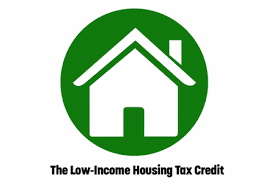Affordable Apartments for Texas
What Does "Income Limit Restrictions" Mean?
Affordable apartment communities are wonderful options for seniors living on a limited / fixed income. There are two major income-based housing programs that you'll likely be considering: Housing and Urban Development (HUD), and Low Income Housing Tax Credits (LIHTC) where Income Limit Restrictions Apply.
The Low-Income Housing Tax Credit (LIHTC) provides a tax incentive to construct or rehabilitate affordable rental housing for low-income households. The Low-Income Housing Tax Credit subsidizes the acquisition, construction, and rehabilitation of affordable rental housing for low- and moderate-income tenants.
This Tax Credit provides a tax incentive to developers to construct or rehabilitate affordable rental housing for low-income households.
Owners or Developers Qualifying for the Tax Credit
Many types of rental properties are LIHTC eligible, including apartment buildings, single-family dwellings, townhouses, and duplexes.
Owners or developers of projects receiving the LIHTC agree to meet an income test for tenants and a gross rent test. There are three ways to meet the income test:
 At least 20 percent of the
project's units are occupied by tenants with an income of 50
percent or less of area median income adjusted for family size
(AMI).
At least 20 percent of the
project's units are occupied by tenants with an income of 50
percent or less of area median income adjusted for family size
(AMI). At least 40 percent of the units are occupied by
tenants with an income of 60 percent or less of AMI.
At least 40 percent of the units are occupied by
tenants with an income of 60 percent or less of AMI. At least
40 percent of the units are occupied by tenants with income
averaging no more than 60 percent of AMI, and no units are
occupied by tenants with income greater than 80 percent of AMI.
At least
40 percent of the units are occupied by tenants with income
averaging no more than 60 percent of AMI, and no units are
occupied by tenants with income greater than 80 percent of AMI.
The gross rent test requires that rents do not exceed 30 percent of either 50 or 60 percent of AMI, depending upon the share of tax credit rental units in the project.
All LIHTC projects must comply with the income and rent tests for 15 years or credits are recaptured. In addition, an extended compliance period (30 years in total) is generally imposed.
Each community has its own specific eligibility requirements, but age and income are two common residency qualifications so it's important to ask. Typically, a senior designated LIHTC community will have a minimum age of 55 or 62. This may vary if the LIHTC community is also using another housing program.
Most LIHTC community residents must have a limited income, usually 60 percent of the area median (mid-point) income. Some community's or community income limits could be as low as 30 percent of the area median income, or has high as 80 percent.
The area median income can vary depending on where a person lives and the number of people in a household. Eligibility for these apartments is based on the number of people in your household, and the occupancy standards of that particular LIHTC community. Your eligible income and your rent will be based on the average income for the area where you live..
The LIHTC program is the primary means of directing private capital towards the creation of affordable rental housing. The tax credits provide developers of low income rental housing with a benefit, which is usually sold to an investor and used to offset a portion of their federal tax liability, in exchange for the production of affordable rental housing.
The value associated with the tax credits allows residences in LIHTC developments to be leased to qualified persons at rents that are often below market rates. The HTC program only addresses Federal taxes; HTC developments pay the normal state and local property and sales taxes unless they are specifically granted abatement by the local taxing jurisdiction.
Housing Tax Credits are awarded annually by the Texas Department of Housing and Community Affairs. Since there are many more applicants than there are available tax credits, the TDHCA utilizes a competitive process in which all applicants are given a score based on the quality of their product, amenities offered, local support, and other factors. This process is very competitive, and only a fraction of those applying for HTC will actually receive an allocation.
 A major difference between residents in
subsidized housing vs. residents living in a LIHTC community, is that
LIHTC residents pay their own rent, and are subject to income
verification, and credit checks to ensure that they can pay the rent.
A major difference between residents in
subsidized housing vs. residents living in a LIHTC community, is that
LIHTC residents pay their own rent, and are subject to income
verification, and credit checks to ensure that they can pay the rent.
Additionally, prospective residents must submit to a criminal history check. An additional requirement of the HTC program which benefits local residents comes in the form of units that are more accessible to the disabled. In addition to making all ground-floor units adaptable for people with disabilities, a minimum of 5% of units are fully outfitted for those with mobility impairments (typically wheelchair-bound) and an additional 2% of units are equipped for those with hearing or visual impairment. This is especially important in smaller communities where these resources often do not currently exist.
If you see properties advertising 'Variable Pricing Structure' this simply means they meet the needs of BOTH affordable housing and market rate apartments that are offered on the same property.
Home | About | Articles | Resources | Site Map | Privacy Policy
Elder Options of Texas
Copyright 2001-2024
All Rights Reserved
DISCLAIMER: Links to other websites or references to products, services or publications do not imply the endorsement or approval of such websites, products, services or publications by Elder Options of Texas. The determination of the need for senior care services and the choice of a facility is an extremely important decision. Please make your own independent investigation.


